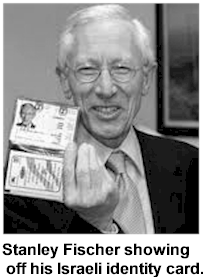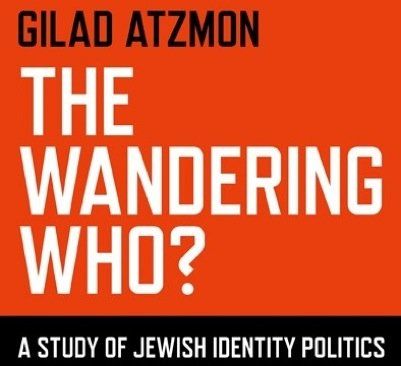The English translation of Chapter 22 of 200 Years Together (“From the End of the War to Stalin’s Death”) is now available. (See here; donations are needed to complete the project.)
The main theme is the post-WWII purging of Jews from many of the powerful positions they held as an elite in Soviet society. Solzhenitsyn’s account is similar to other mainstream accounts, such as Yuri Slezkine’s The Jewish Century. When Jewish intellectual activists write about the role of the Jews in the USSR, they generally focus on this period—Jews as the victims of anti-Jewish actions—rather than the status and role of Jews in previous decades. The following quote from a historian sums up the situation:
“‘Pushing’ Jews out of prestigious occupations that were crucial for the ruling elite in the spheres of manufacturing, administration, cultural and ideological activities, as well as limiting or completely barring the entrance of Jews into certain institutions of higher education gained enormous momentum in 1948-1953. … Positions of any importance in KGB, party apparatus, and military were closed to the Jews, and quotas were in place for admission into certain educational institutions and cultural and scientific establishments.”
Solzhenitsyn pointedly notes that Jews who had benefited from their nationality because they were officially classified as an oppressed minority under the Czar were now targeted on the basis of nationality:
Through its “fifth item” [i.e., the question about nationality] Soviet Jews were oppressed by the very same method used in the Proletarian Questionnaire, other items of which were so instrumental in crushing the Russian nobility, clergy, intellectuals and all the rest of the “former people” since the 1920’s.
Nevertheless, Jews were by no means eliminated from prestigious occupations. A historian comments that “Although the highest echelon of Jewish political elite suffered from administrative perturbations; but surprisingly it was not as bad as it seemed. … The main blow fell on the middle and the most numerous stratum of the Jewish elite — officials… and also journalists, professors and other members of creative intelligentsia.”
Anti-Jewish attitudes remained strong, fueled in large part because of the role of Jews as agents of oppression during the pre-war decades. For example, Solzhenitsyn notes that there were negative attitudes toward Jews returning to areas that the Germans had evacuated, particularly Ukraine. Anti-Jewish attitudes combined both traditional ideas (Jews as wealthy: demanding restoration of prime residential property they owned before the war) as well as the role of Jews as government officials during the pre-war Soviet oppression. A Jewish observer who claimed that Nikita Khrushchev had said, “In the past, the Jews committed many sins against the Ukrainian people. People hate them for that. We don’t need Jews in our Ukraine. It would be better if they didn’t return here.”
Jews complained about these attitudes as well as the fact that other groups were indifferent to Jewish suffering, but Solzhenitsyn notes the irony, quoting another Jewish observer who stated “that in the years of our terrible disasters, the Jewish intellectuals did not raise their voices in defense of the deported nations of Crimea and the Caucasus.” The example is a testimony to Jewish ethnocentrism–focused on their own suffering but never seeing, much less acknowledging, their indifference to the suffering of others or their role in causing it during the height of their power.
There was a similar scene throughout Eastern Europe as Jews returned from exile after the war.
A great overrepresentation of Jews occurred in the post-war puppet Polish government, among managerial elites and in the Polish KGB, which would again result in miserable consequences for the Jews of Poland. After the war, other countries of Eastern Europe saw similar conflicts: “the Jews had played a huge role in economic life of all these countries,” and though they lost their possessions under Hitler, after the war, when “the restitution laws were introduced… (they) affected very large numbers of new owners.” Upon their return Jews demanded the restoration of their property and enterprises that were not nationalized by Communists and this created a new wave of hostility towards them (22).)
Toward the end of Stalin’s life, he intensified the campaign against Jews, possibly resulting in his death in 1953. The main source of his hostility toward Jews was the age-old concern about loyalty: Jewish ties with Jews in other countries — in this case, Israel and the United States. During the Cold War there was a fear that Jewish sympathies would lie with Israel and the US as Israel’s main source of support. One result was that Stalin crushed the Jewish Anti-Fascist Committee (EAK), a Jewish organization that had been created to court support for the USSR among American Jews during WWII. During the Cold War, the ties between Soviet Jews and American Jews became a liability in the eyes of Soviet regime.
An indication of Jewish power is that the campaign against the EAK in 1952 was carried out “slowly and with great caution” because Stalin was “very well aware what kind of international storm would be triggered by using force.” It’s striking that the mass murders and deportations of the 1920s and 1930s were carried out without any international outcry, but the campaign against a rather small Jewish group was done very cautiously. Thirteen Jews were executed.
This is similar to what happened when Stalin ordered the murder of two Jewish leaders of the international socialist movement, Henryk Ehrlich and Victor Alter in 1942. These murders of two Jewish leftist activists created an international incident, and there were protests by leftists around the world — the same people who had previously ignored or rationalized mass murder during the 1920s and 1930s. Albert Einstein and Eleanor Roosevelt made appeals to Stalin, and American Jewish leaders, such as Nahum Goldmann of the World Jewish Congress and Rabbi Stephen S. Wise of the American Jewish Congress (AJCongress), helped quell the uproar over the incident and shore up positive views of the Soviet Union among American Jews.
Another manifestation of Stalin’s anti-Jewish campaign was the trial of Rudolf Slansky, the Jewish First Secretary of the Czechoslovak Communist Party. The trial was “openly anti-Jewish with naming ‘world leading’ Jews such as Ben Gurion and Morgenthau, and putting them into the same harness with American leaders Truman and Acheson.”
Stalin also arrested a large number of Jewish doctors —the “Doctors’ plot” — and “prominent Soviet Jews were forced to sign a letter to Pravda with the most severe condemnation of the wiles of the Jewish ‘bourgeois nationalists’ and their approval of Stalin’s government.” (The letter was preceded by an article in Pravda published on January 13, 1953 claiming “”The majority of the participants of the terrorist group… were bought by American intelligence. They were recruited by a branch-office of American intelligence — the international Jewish bourgeois-nationalist organization called ” Joint” [i.e., the American Jewish Joint Distribution Committee]. The filthy face of this Zionist spy organization, covering up their vicious actions under the mask of charity, is now completely revealed.”)
In February, the Soviet Embassy in Tel Aviv was bombed. Solzhenitsyn accepts the idea that the “international anger” resulting from the Doctors’ plot “could possibly” have motivated “internal forces” to murder Stalin:
And then Stalin went wrong, and not for the first time, right? He did not understand how the thickening of the plot could threaten him personally, even within the secure quarters of his inaccessible political Olympus. The explosion of international anger coincided with the rapid action of internal forces, which could possibly have done away with Stalin. It could have happened through Beria (for example, according to [Abdurakhman] Avtorhanov’s version (66).)
The trimming of Jewish power in the USSR is important not just as a facet of Jewish history in the USSR but also because it had a major role in influencing some components of the American Jewish community to become less enamored with the left—notably Leo Strauss and the neoconservatives. Strauss believed that liberal, individualistic Western societies were best for Judaism. National Socialism was obviously bad for Jews, and Communism had become so. Despite their elite status, the events of 1948-1953 showed that Jews were vulnerable when the attitudes of an autocrat like Stalin turned against them. Liberal societies were best, but they had to be controlled against populist tendencies. After all, the working class had eventually opted to join the National Socialists.
Stephen Holmes describes Strauss’s solution to the Jewish dilemma as follows: “The good society … consists of the sedated masses, the gentlemen rulers, the promising puppies, and the philosophers who pursue knowledge, manipulate the gentlemen, anesthetize the people, and housebreak the most talented young” — a comment that sounds to me like an alarmingly accurate description of the present situation in the United States and elsewhere in the Western world. Given Strauss’s central concern that an acceptable political order be compatible with Jewish survival in the Diaspora and with the tendency for Jews to become an elite, it is reasonable to assume that Strauss believed that Jews would be a prominent part of the aristocracy and that the arrangement would serve Jewish interests–as indeed the current regime does.


 Grant Smith, writing at Antiwar.com provides an enlightening account of the nomination of Stanley Fischer as Vice-Chair of the Federal Reserve (“
Grant Smith, writing at Antiwar.com provides an enlightening account of the nomination of Stanley Fischer as Vice-Chair of the Federal Reserve (“



